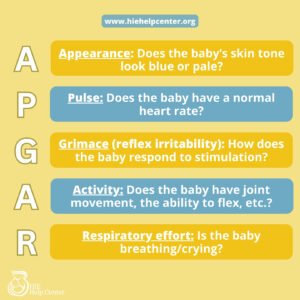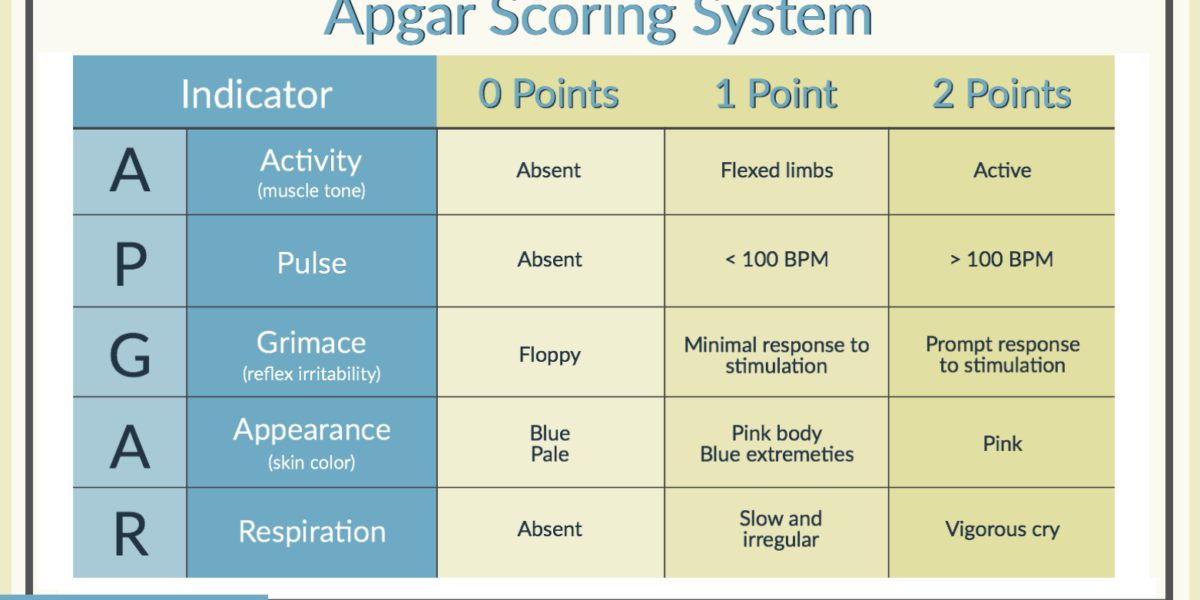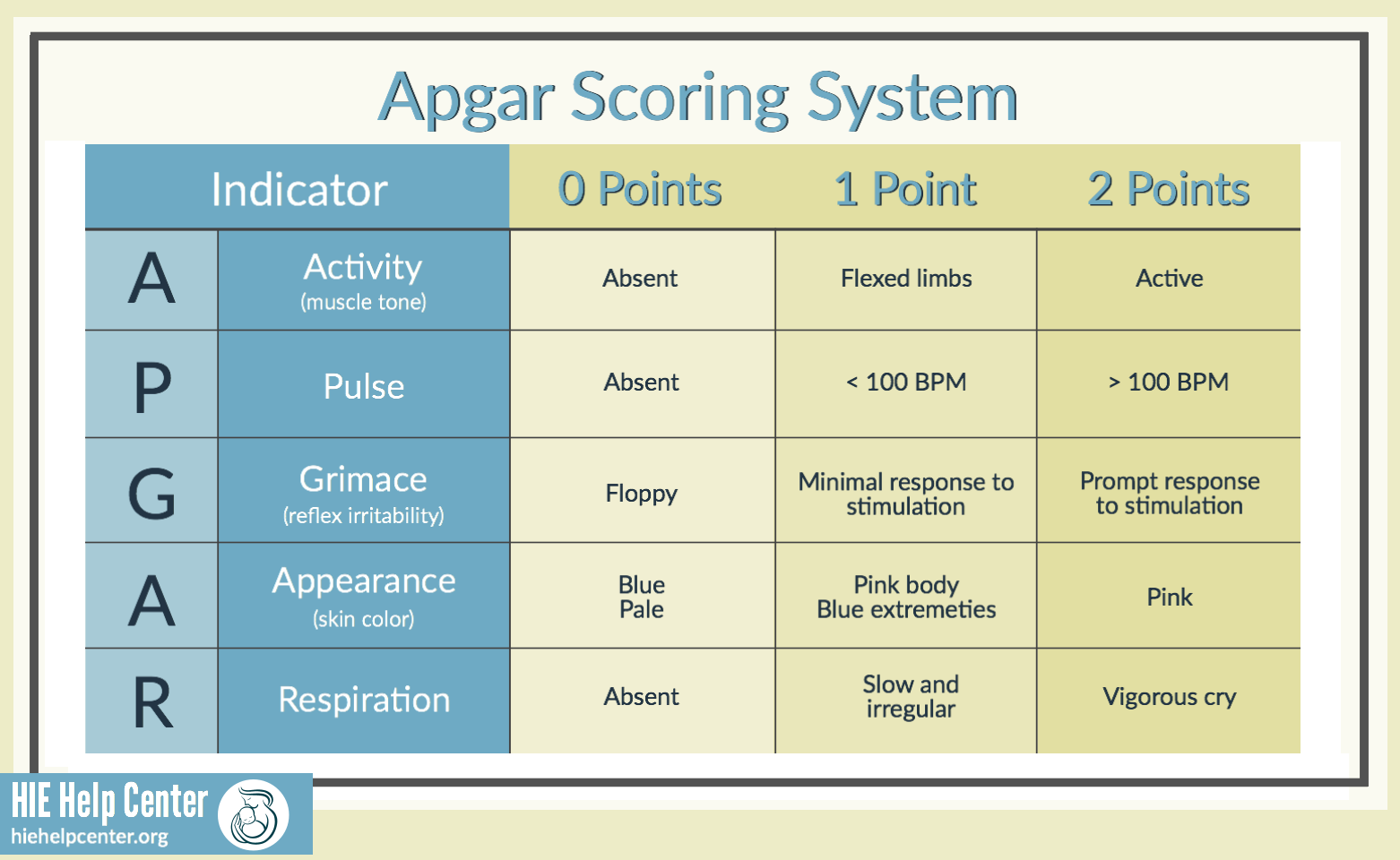Created by Dr. Virginia Apgar in 1952, the Apgar score is a simple method of quickly assessing a newborn’s health and vital signs (1). The scoring system is common practice in hospitals today.
The five criteria assessed in the Apgar score are:
1. A – Appearance: This is an evaluation of the baby’s skin color/tone when they are born.
- Blue, pale – 0 points
- Blue extremities, pink body – 1 point
- Pink – 2 points
2. P – Pulse: The medical team records the baby’s heart rate.
- Absent heart rate – 0 points
- Slow heart rate (below 100 bpm) – 1 point
- Fast heart rate (over 100 bpm) – 2 points
 3. G – Grimace: The medical team notes how the baby responds to stimuli.
3. G – Grimace: The medical team notes how the baby responds to stimuli.
- Floppy/no response – 0 points
- Minimal response to stimuli – 1 point
- Prompt response to stimuli – 2 points
4. A – Activity: The medical team notes the baby’s muscle tone/activity level.
- Absent – 0 points
- Flexed arms and legs – 1 point
- Active – 2 points
5. R – Respiration: The medical team notes the baby’s breathing ability.
- Not breathing – 0 points
- Slow and irregular breathing – 1 point
- Vigorous cry – 2 points
How is an Apgar score calculated?
The five criteria are each scored as 0, 1, or 2 (two being the best), and the total score is calculated by then adding the five values obtained.
What do Apgar scores mean?
- Scores of 0-3 are considered critical, especially in babies born at or near term
- Scores of 4-6 are considered below normal and indicate that the medical intervention is likely required
- Scores of 7+ are considered normal
Even if the one-minute Apgar score is low, it may not indicate long-term health concerns (1). There is evidence to suggest that infants whose Apgar scores remain low at five minutes or later are much more likely to suffer long-term neurological damage.
Assisted Apgar scores
Babies with lower Apgar scores are more likely than babies with higher scores to need resuscitation (2). Sometimes, however, resuscitation must occur before an Apgar score is taken.
If an infant undergoes resuscitation, the Apgar score given during resuscitation will not be the same as that given to a baby breathing on their own (1). Therefore, many have suggested that an assisted Apgar score be given to resuscitated babies. This score would account for resuscitation.
Apgar scores, asphyxia, and HIE
Asphyxia is the marked impairment of gas exchange, which can, if prolonged, lead to progressive hypoxemia and other complications. An Apgar score alone cannot diagnose asphyxia (1). A low Apgar score can simply mean that a baby is immature, not necessarily that they are suffering from asphyxia. However, lower Apgar scores can be evidence of asphyxia and hypoxic-ischemic encephalopathy (HIE). The lower the Apgar score, the more alert the medical team should be to the possibility of the baby requiring intervention.
Higher Apgar scores, however, do not rule out the possibility that the baby has a brain injury, such as HIE (2). In all cases, physicians must recognize other signs and symptoms of damage in order to treat them both quickly and appropriately.
Other signs and symptoms of HIE
- Fetal heart rate patterns and abnormalities
- Clinical cerebral function
- Placental pathology
- Multisystem organ function
- Neuroimaging studies
- Neonatal electroencephalography
Sources:
- Women’s Health Care Physicians. (n.d.). Retrieved from https://www.acog.org/Clinical-Guidance-and-Publications/Committee-Opinions/Committee-on-Obstetric-Practice/The-Apgar-Score
- (n.d.). Retrieved from https://www.uptodate.com/contents/overview-of-the-routine-management-of-the-healthy-newborn-infant#H3


